Tourism boards from Australia to Tahiti like to boast about their beaches, many proclaiming to have the whitest sands in the world. But since when is white sand superior to all others?
Sand comes in an absolute rainbow of colors — from teal to orange to black, white, blue, and even pink — but only if you know where to look. And the unique geology behind these sands is often as cool as the colors themselves.
Here are seven weird and colorful sands from around the world that will put your average beach sand to shame. (And check out our story on the hobby of sand collecting. Yes, really.)
-
Olivine Sand
Hawai’i, USA
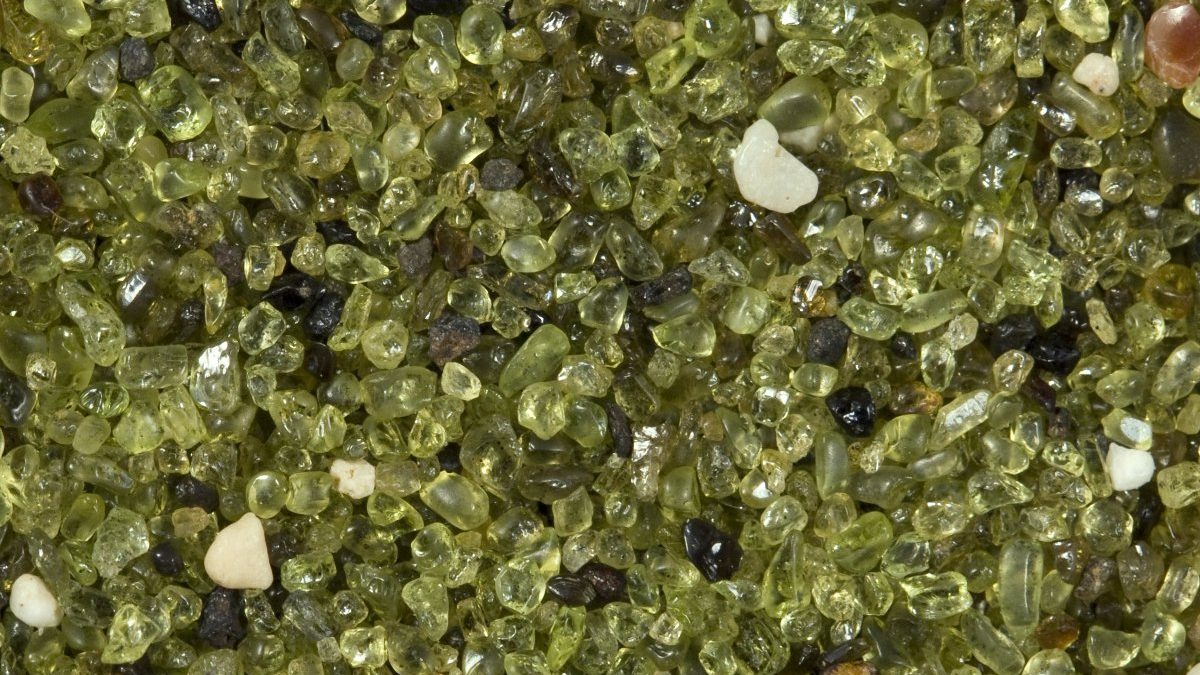
Olivine sands from Hawai’i. Width of view is 20 mm. Photo © Siim Sepp (www.sandatlas.org), used with permission My sand obsession started on Hawaii’s Papakōlea Beach, where I saw my first olivine sands. Olivine is an igneous mineral formed from the crystallization of magma. At Papakōlea, the olivine erodes out of an ancient volcanic cinder cone that encloses the semi-circular beach. Sand of almost exclusively olivine grains is very rare, and Papakōlea is one of only four green sand beaches in the world. The others are Hornindalsvatnet in Norway, Punta Cormorant in the Galapagos Islands, and Talofofo Beach in Guam.
-
Garnet Sand
Australia
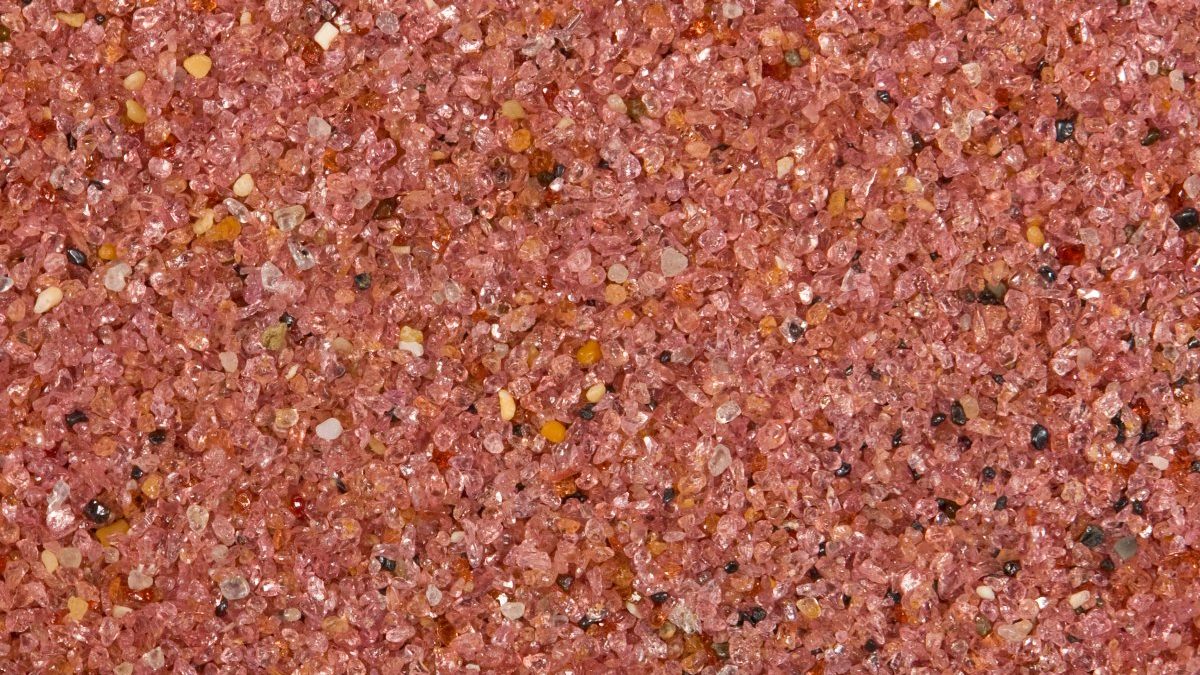
Garnet sand from Australia. Width of view is 20 mm. Photo © Siim Sepp (www.sandatlas.org), used with permission Garnet is found in small quantities in many different types of sand. But in a few locations you can find sands dominated by garnet, which look red, purple or pink depending on the light and source rock. Some notable garnet sand locations include California’s Pfeiffer Beach, various beaches in New York and Rhode Island, Idaho, Alaska, coastal Namibia, and Australia.
-
Glauconite Sand
France
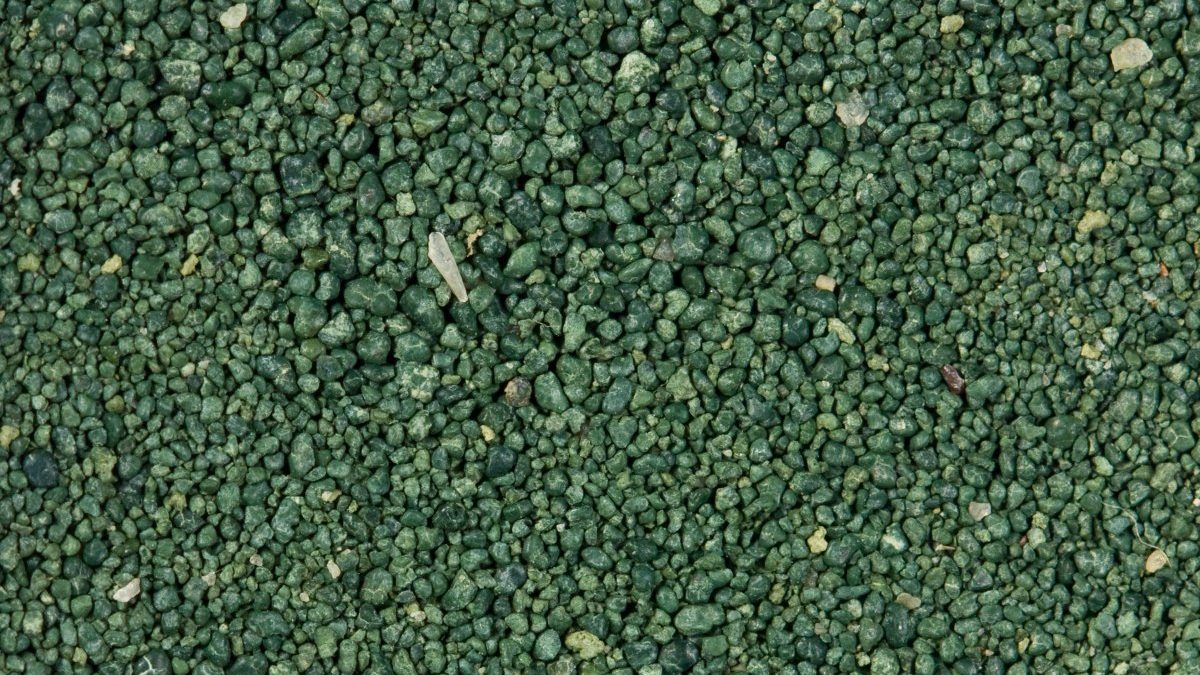
Glauconite beach sand from France. Width of view is 20 mm. Photo © Siim Sepp (www.sandatlas.org), used with permission Greensand — not to be confused with green sands formed from olivine— is a sand or sandstone that gets its blue-green color from mineral glauconite. These sands erode from glauconitic sandstones, which are typically formed from ancient marine sediments laid down in the Cambrian or Cretaceous Periods. Notable examples of glauconite sand are found in Estonia and France.
-
Star Sand
Japan
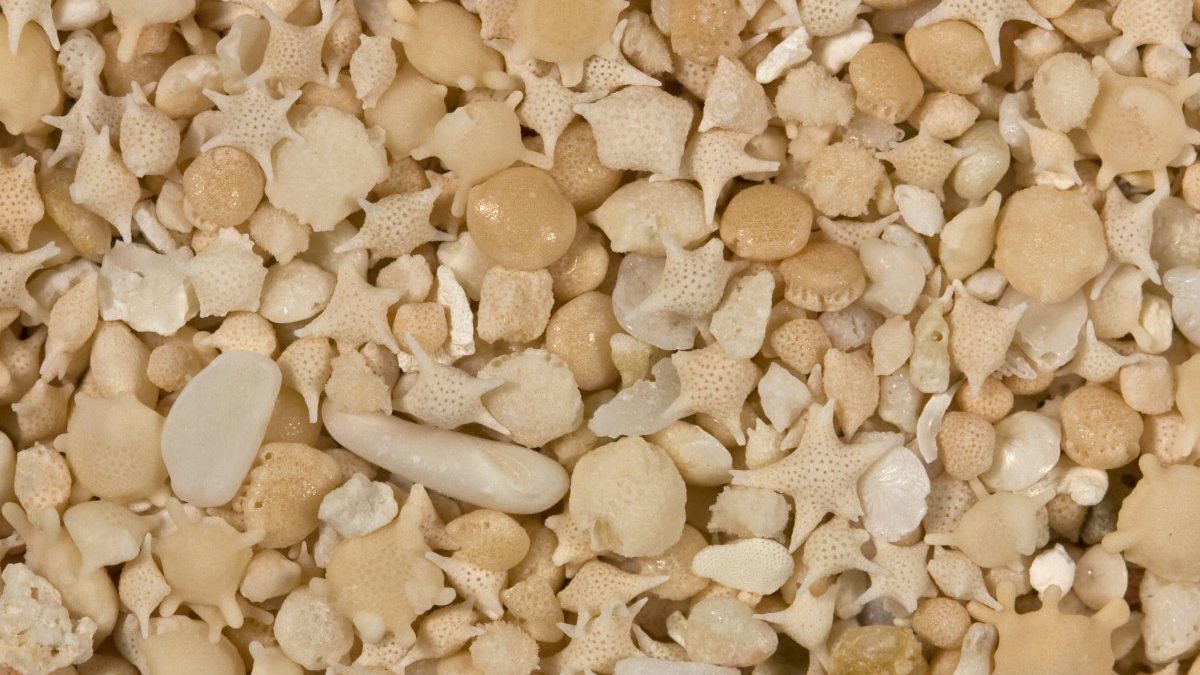
Japanese star sand. Photo © Siim Sepp (www.sandatlas.org), used with permission Star sand is the celebrity of rare sands. Found on Japan’s Ryukyu Islands, including Okinawa, it’s formed from the shells of microscopic, single-cell ocean organisms called foraminifera. Different species of foraminifera create different shell shapes, and the rare, star-shaped ones in Japan are formed by the species Baculogypsina sphaerulata. These tiny little sunbursts are just a few millimeters across, but you can still see them with the naked eye. The sand sample above also contains shells from the Calcarina foram genus, often called sun sand.
-
Ooid Sand
Utah, USA
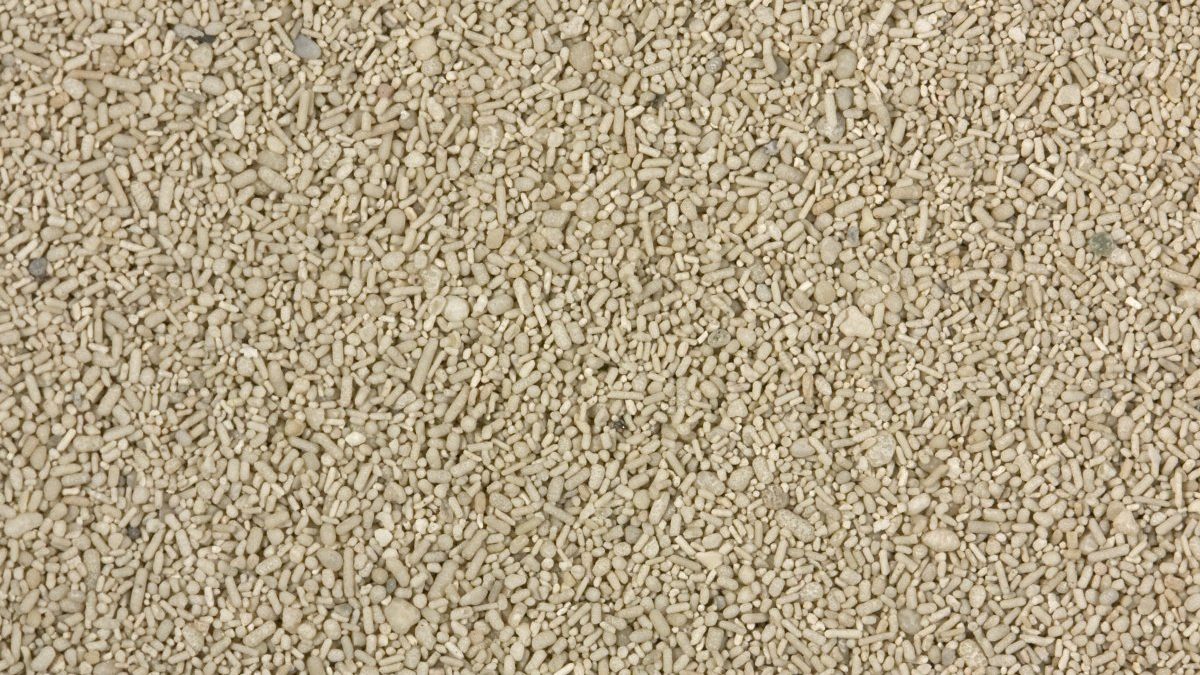
Ooid sand from Stansbury Island, The Great Salt Lake. Width of view 5.5 mm. Photo © Siim Sepp (www.sandatlas.org), used with permission Ooid are small, rounded pellets that usually formed in warm, shallow, wave-agitated waters. In these conditions, minerals suspended in the water — usually calcite or aragonite — gradually accumulate around a central grain. (Somewhat similar to how snow sticks to a snowball rolling downhill.) If you cut them in half, you would see concentric circles much like tree rings. Most ooids are round, but others are long, smooth cylinders.
Famous ooid sand locations include the Persian Gulf, the Yucatán Peninsula, and the Bahamas. The sample above is a rare example of a non-marine ooid sand, from Stansbury Island in Utah’s Great Salt Lake.
-
Black Sand
Hawai’i, USA
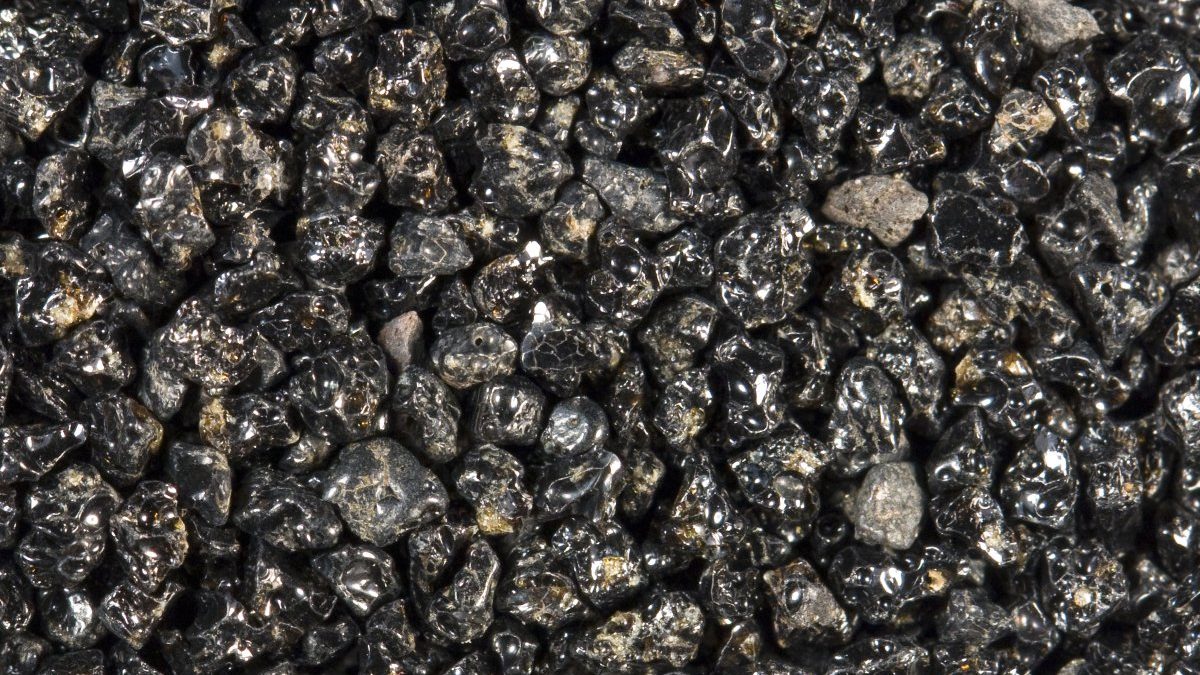
Black beach sand from Punalu’u Beach in Hawai’i. Width of view 20 mm. Photo © Siim Sepp (www.sandatlas.org), used with permission Even non-arenophiles (or sand lovers) are familiar with black sand. Black beach sand is made up of volcanic glass, which forms when lava flows into the oceans and cools rapidly. Black sand can be found on dozens of volcanic beaches around the world, including Hawai’i, Iceland, New Zealand, and throughout the tropical South Pacific.
But not all black sand is volcanic… sometimes it can be formed from other minerals. Often light-sand beaches will have streaks or patches of dark sand, commonly mistaken for oil or other pollution. These are actually patches of heavy mineral sand exposed by the waves.
-
Mica Sand
France
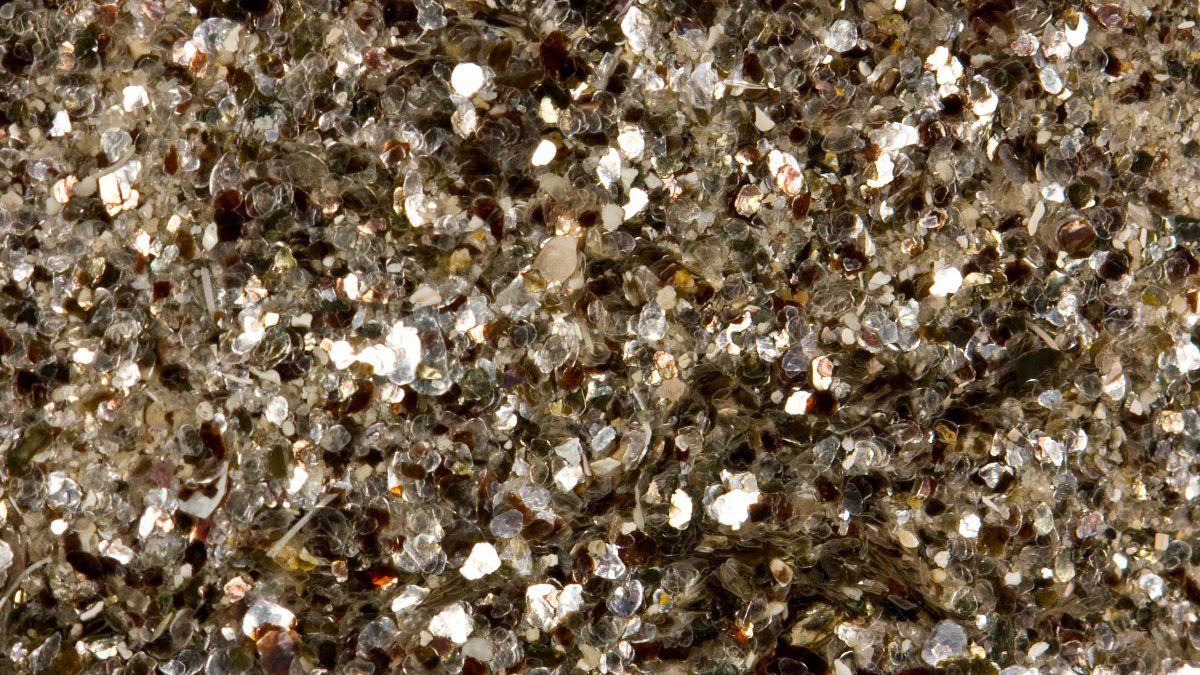
Mica sands from France. Width of view 20 mm. Photo © Siim Sepp (www.sandatlas.org), used with permission What do your kitchen countertops and eyeshadow have in common? Mica. Formed from the minerals biotite or muscovite, mica is common in igneous rocks, like granite, and is mined around the world for use in products as varied as cosmetics, electrical components, and construction.
Small portions of mica lend a subtle sparkle to many different sands, particularly in riparian areas, but like garnet they can also occur in large quantities. The sample above, from Cap Coz, France, is particularly rich in muscovite and biotite flakes.
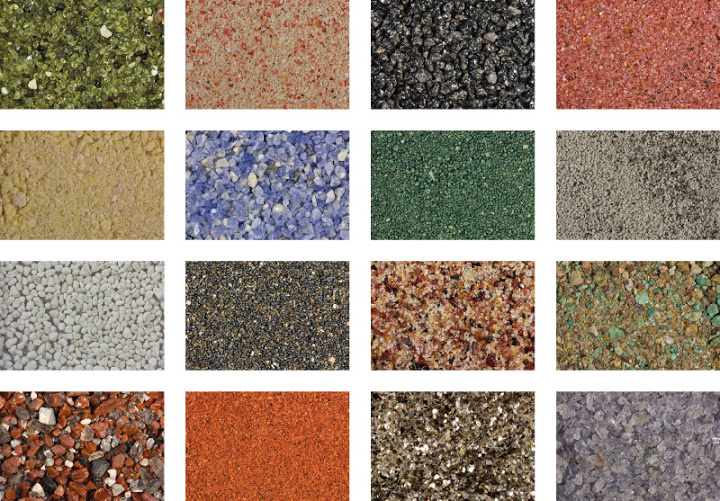



Fantastic Article. I had no idea there was so much variety! I still think the best sand I have ever felt between my toes is our very own Plage de la Nartelle in Sainte-Maxime.
This beautifully curated piece has taken me on a captivating journey across the globe, introducing me to some of the most remarkable and diverse sandscapes our planet has to offer. The attention to detail and the sheer diversity of sands showcased in this collection are truly commendable.
The lighting during different times of the day can significantly affect the pink hue of the sand. For the most vibrant pink sands, consider visiting the beach during sunrise or sunset when the sun’s angle accentuates the color. It’s also a fantastic time to capture some memorable photos.
Pink Sand Santorini Beaches
https://journeyindex.com/pink-sand-santorini-beaches/
Great article!
On Coffin’s Beach in West Gloucester MA USA, we see swirls and swaths of rich purple sand. The hues range from a deep cabernet to strong amethyst to dusty grey-rose. Some say the sands color comes by the abundance of mussel shells. We also see black mica sand. Any thoughts on what contributes to the gorgeous color?
I really like all of these sands but I would like you to include mongolian sand in the next blog collection.
Kind regards// Quadingle Dingleton
thank you so much for this fantastic article! i’m collecting fun sands from around the world as a present for a friend, and this is just the reference i needed! thank you! 🙂